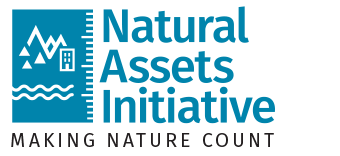The next five community projects testing natural asset management across Canada are underway. The communities are: City of Courtenay and the District of Sparwood in British Columbia; the Western Regional Service Commission and Southeast Regional Service Commission in New Brunswick; and the City of Oshawa in Ontario.
In B.C., the city of Courtenay experienced flooding in the Lewis Park Commercial Area in 2009, 2010 and 2014. The frequency of flooding has been far greater than the provincial standard of 1:200 years and is expected to worsen with climate change.
The city will consider current and future roles of natural assets in the Courtenay River corridor in mitigating flood risks in the downtown core, including the costs and benefits of engineered alternatives. Courtenay practices advanced asset management principles and is already recognised as a leader in the field. The city’s 2017 budget included funds for flood mitigation planning, which will become part of an Integrated Stormwater Master Plan.
The District of Sparwood, located on B.C.’s Elk River, is home to 3,784 residents and relies on recreation, tourism and fisheries. The Official Community Plan emphasizes protecting, enhancing and using natural assets. The district wants to improve water quality in the Elk River by identifying natural assets (wetland, forest, riparian areas, etc.) that provide filtering and storage services, and managing these at an optimal level. Some areas of the river are regularly affected by large stormwater flows dumping sediment and other urban runoff into the river. The project will identify natural assets that can provide stormwater pre-treatment to help control erosion and the discharge of sediment and other effluents. It hopes to improve water quality and recreational fisheries.
In New Brunswick, the Southeast Regional Service Commission region is undertaking projects in Riverview and Riverside-Albert. The Village of Riverside-Albert (population ~350) is located approximately 60 km from the City of Moncton at the upper reaches of the Bay of Fundy. Water quality and supply in the village limits future economic development and growth and there are financial constraints to addressing this issue. The monitoring, management, and rehabilitation of natural assets that provide drinking water may allow the village to address water supply and quality at lower cost than engineered alternatives.
This project will determine the water supply value of the watershed providing the drinking water and develop natural asset–related strategies and actions that the village can take to improve water quality and supply at a reasonable cost. A particular focus will be on whether bogs and wetlands in the area can be restored to meet the village’s water quality and supply needs. This could support economic development in very practical ways.
The Western Valley Regional Service Commission region in New Brunswick has long experienced annual flooding, which under climate change has become an increasing hazard. The communities along the St. John watershed have experienced severe flooding, erosion, infrastructure damage and property loss. The project focuses on the Town of Florenceville-Bristol, a community of 1,604 people located mostly along the banks of the St. John River. The goal is to minimize erosion and reduce maintenance of culverts and roadside ditches in the Bristol Heights subdivision catchment areas. They will be considering natural assets that provide erosion control benefits including the forested and vegetated cover behind the subdivision.
In Ontario, the City of Oshawa is committed to developing an asset management policy that includes natural assets. Oshawa’s Strategic Plan identifies the need to manage and fund present and future assets, including parks and open spaces, to ensure safe and reliable infrastructure. The city wants to Increase the quality and resilience of the riparian area and stream banks along the Oshawa Creek south of Oshawa’s downtown core to minimise erosion from more frequent storm events. The project will incorporate naturalizing the areas along the creek, which is located within the subwatershed of the Oshawa Creek Watershed. The creek is affected by new developments north of the downtown core and is a prime conveyance of stormwater to Lake Ontario.
We’ll update you on progress as these projects continue.
City of Courtenay, British Columbia
District of Sparwood, British Columbia
Western Regional Service Commission, New Brunswick
Southeast Regional Service Commission, New Brunswick: Riverview, Riverside-Albert


